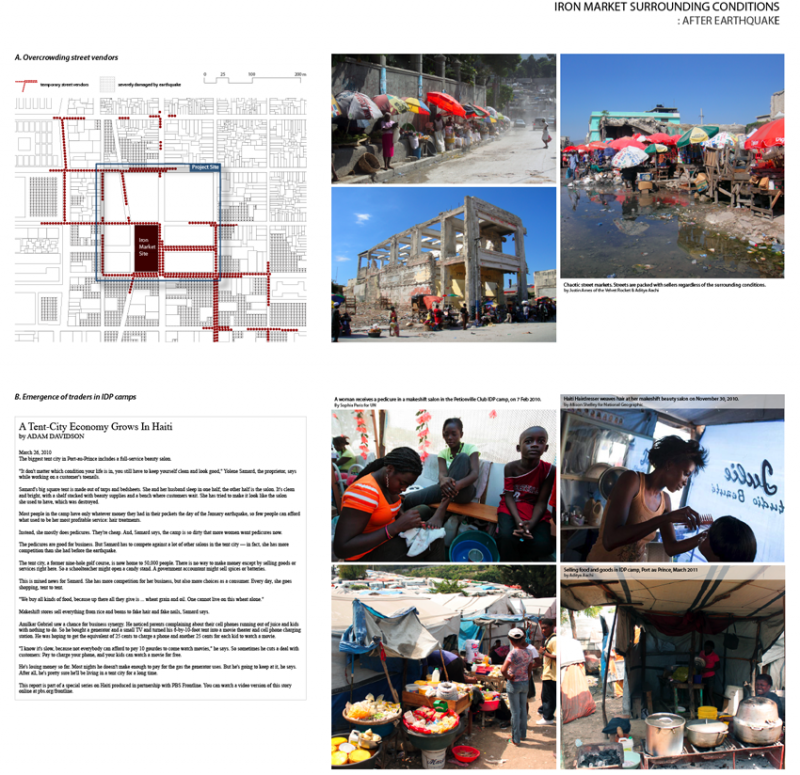
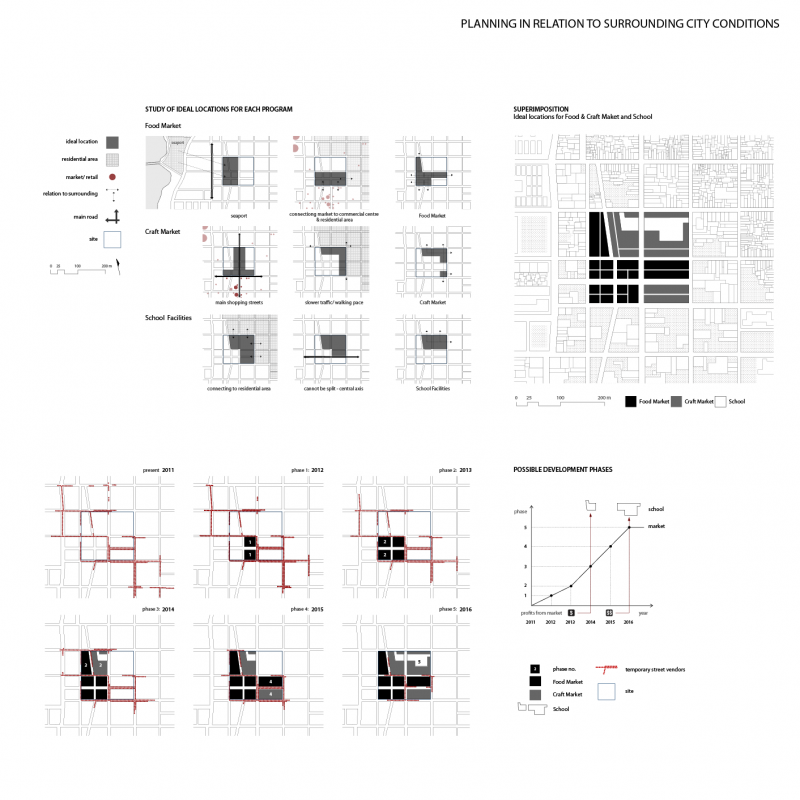
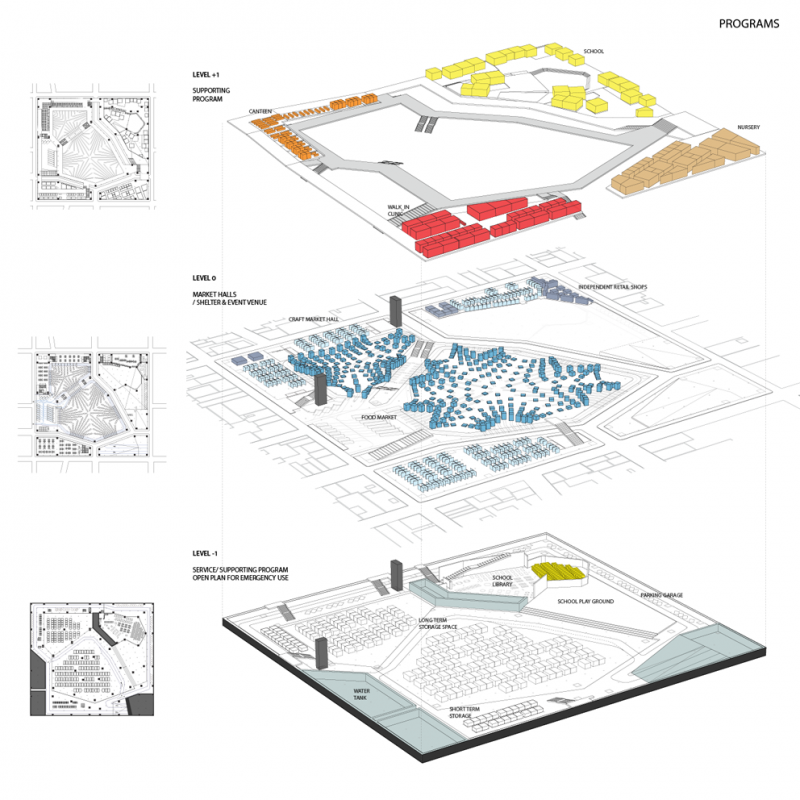
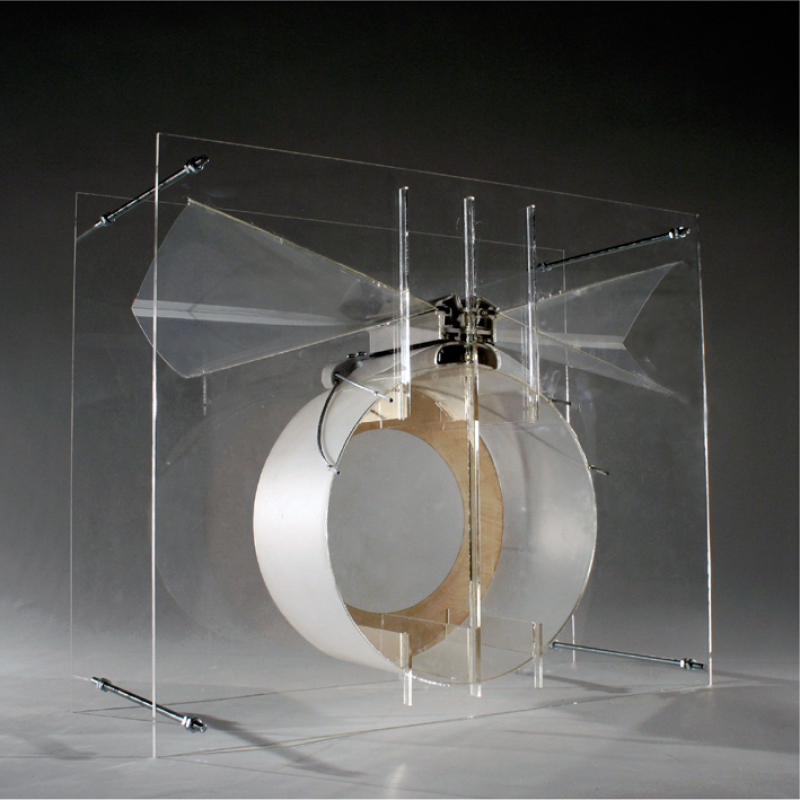
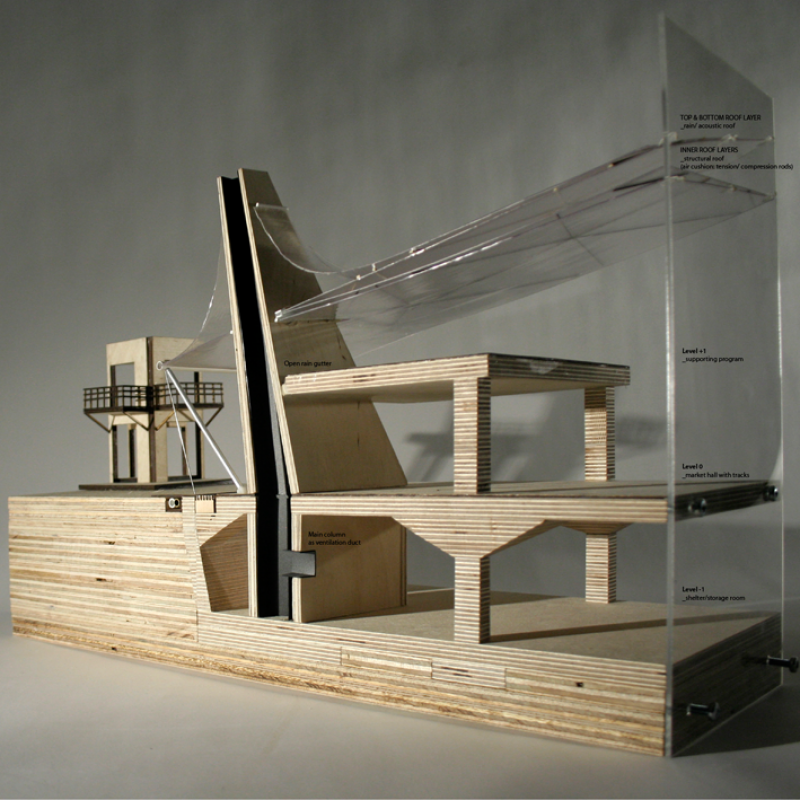
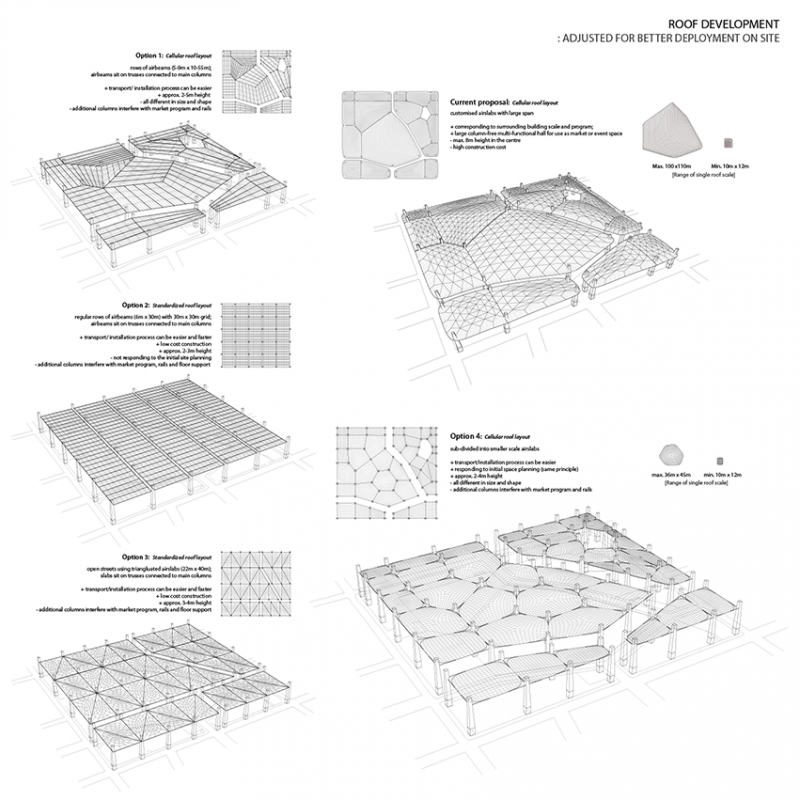

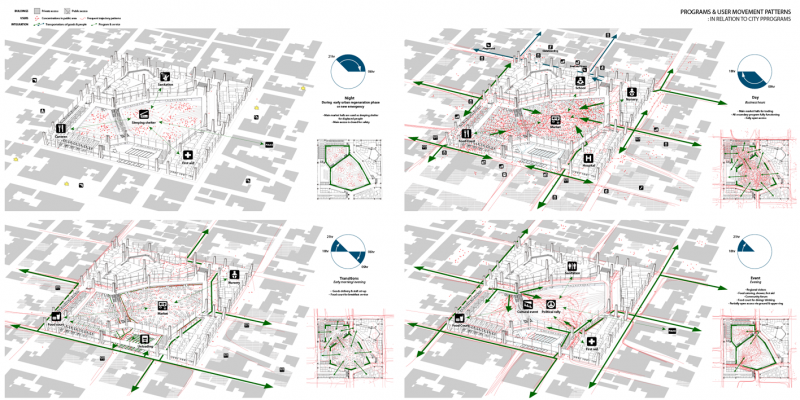
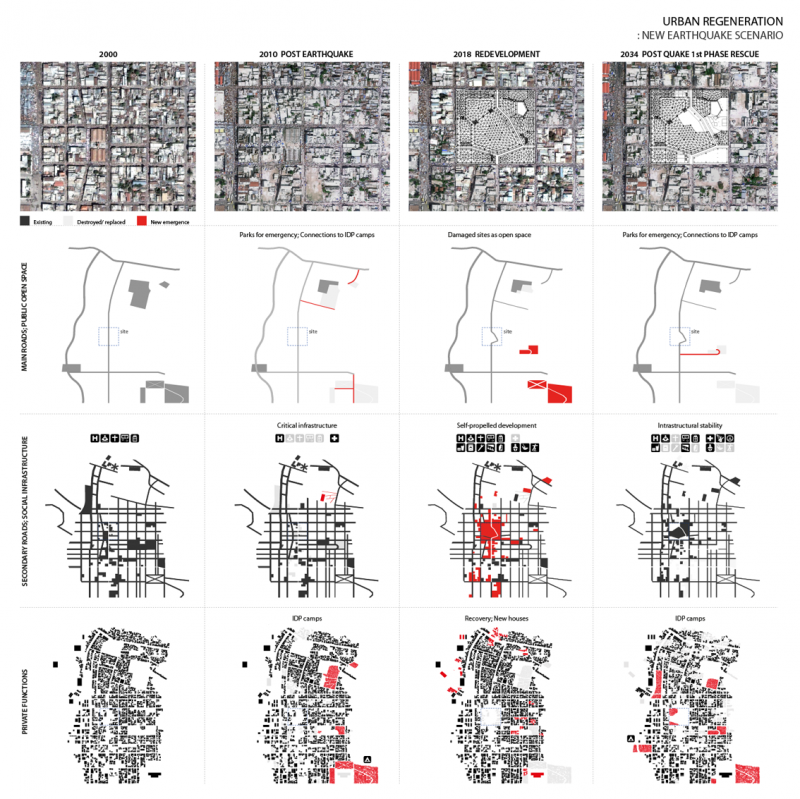

Rehabilitation Market
Emergency safe haven and centre for economical and social regeneration of local communities in Port au Prince.
After the earthquake in Haiti, trading has been one of the first activities to reemerge. With whatever was left to be exchanged, an improvised yet active market structure has formed at the heart of a community in struggle to reorganise itself. This investigation studies the potential of a market building as a vehicle to regenerate the Haitian community and economy. Re-imagining the existing reconstruction project of the historic Iron Market conducted by London-based architects, the project enhances the economical and social attributes of the market structure by developing a new market typology in which destructed neighbouring social infrastructure can be integrated throughout a gradual extension. The project explores the transplantation of vernacular architecture and technologies by introducing a contemporary framework for Haitian culture, similar to how the original Iron Market was brought from an abandoned train station in Cairo in 1891 and with its French iron structure and minarets became a symbol of Port au Prince.
Earthquake Vernacular
Employing lightweight materials and fast construction methods, the project investigates strategies for architectural systems of rehabilitation within a short time span as well as within the longer term development of a new centre for local communities. Combining markets with social facilities such as a school, food court and clinic, the new centre is designed to operate in different ways during day, evening and night. In the case of a new emergency, the building can function as a safe haven and hub in the organisation and facilitation of relief efforts. Infrastructures for ventilation, storage and water collection are integrated within the architectural systems and support the independent and efficient operation of the project within each phase of its development, which is planned to unfold in different phases over time.